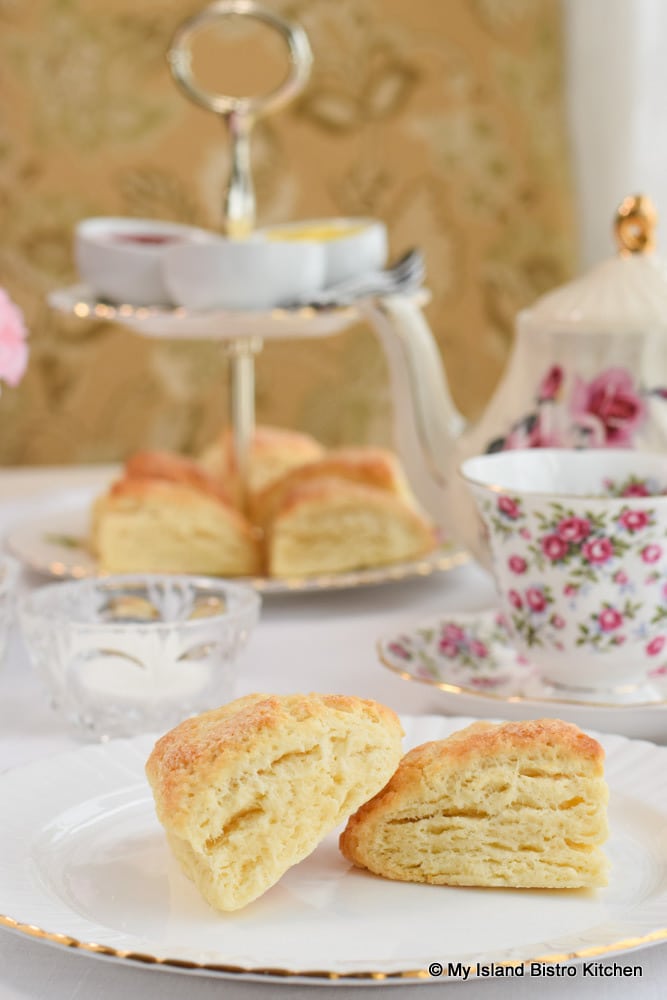
Today marks my 8th Blogiversary. Eight years since I began My Island Bistro Kitchen food blog. My, how time does fly!
In previous years, I marked this day with some kind of special sweet treat. You can check those out by clicking on the links at the end of this posting. It has occurred to me that I have never celebrated the occasion with a simple Cream Tea. And, regular followers of my blog will know I love anything related to a tea event! So, a Cream Tea it is to celebrate my 8th Blogiversary!
This blogiversary also coincides with January being National Hot Tea Month so I figure celebrating it as part of my blogiversary can only be a good thing. Any tea event, of course, is made the better when freshly made scones with layers of flakiness are included!
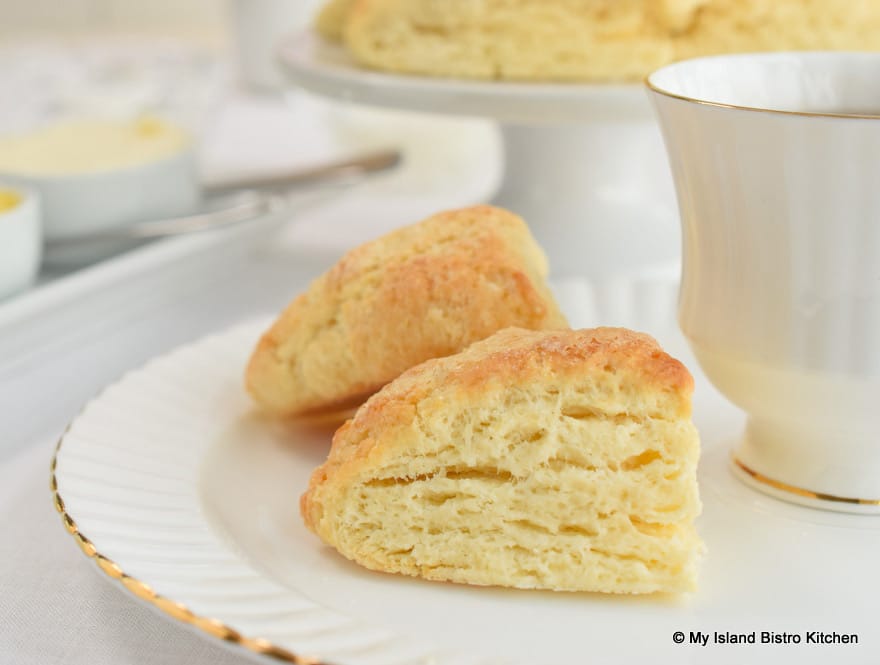
There are many different kinds of tea events. In a previous posting titled Autumn Savoury Tea, I explained the difference between an afternoon tea and a high tea (no, they are not the same thing and should not be confused). However, today, I am going to talk exclusively about the Cream Tea and the elements that typically comprise this type of Tea. (And, no, a Cream Tea has nothing to do with putting cream in your tea!)
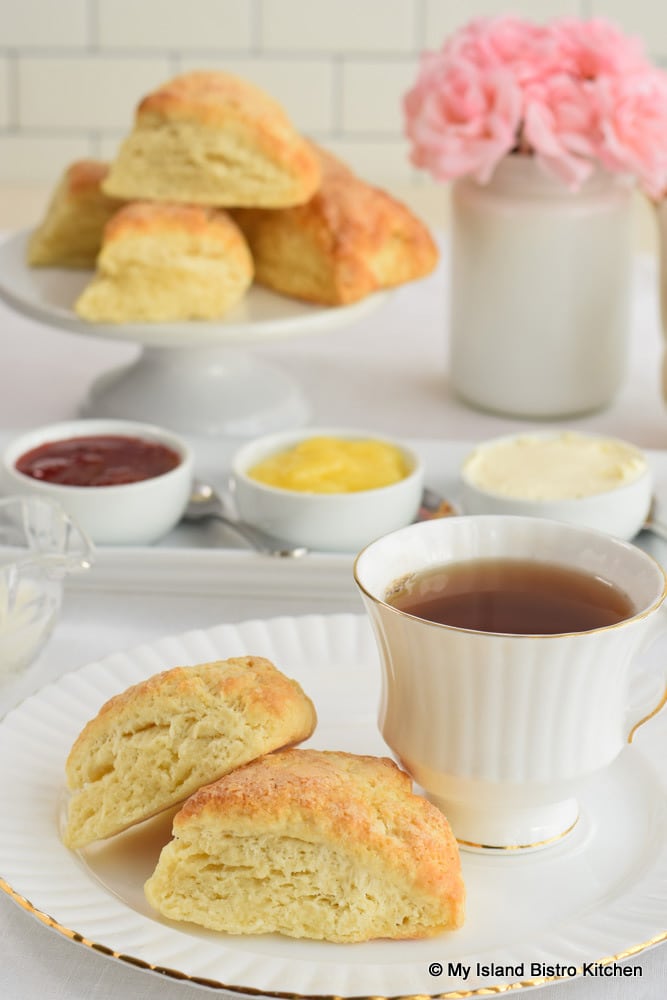
What is a Cream Tea?
A Cream Tea consists of a pot of hot tea, scones, jam or preserves, and clotted cream (or English Double Cream). So named for the clotted cream traditionally served on the scones, a Cream Tea is considered a light snack such as would be suitable for lunch, for example, or for an early to mid-afternoon light refreshment.
What are Scones?
Scones are similar to what we here, in North America, refer to as tea biscuits. However, scones are made with a richer and sweeter dough than tea biscuits.
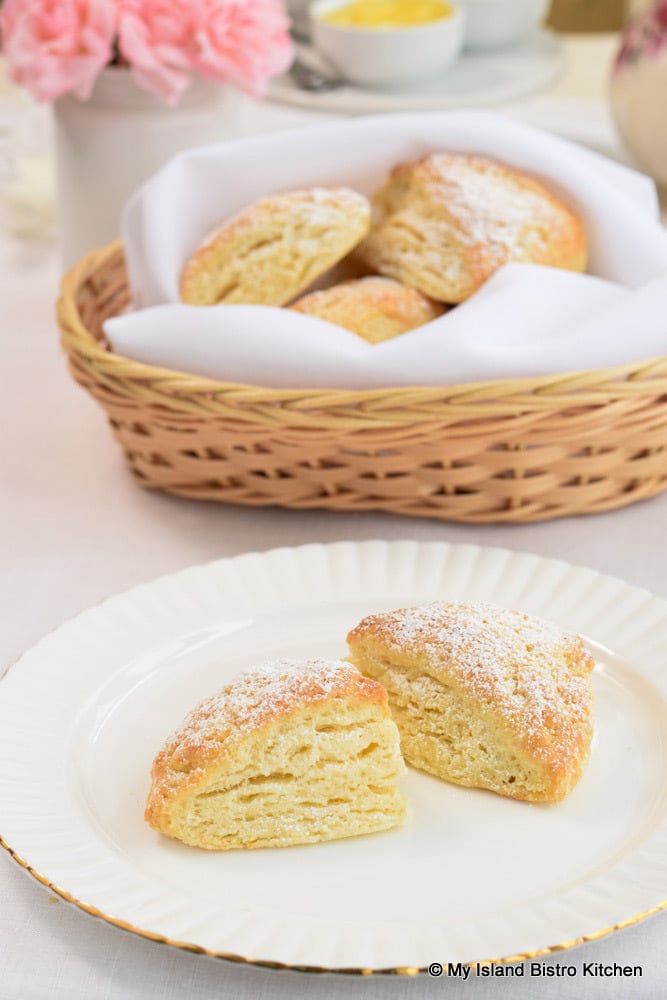
Cream Tea scones are usually (but not always) plain and should always be served warm (and preferably freshly same-day made). You will often find scones served cozily tucked inside a napkin to keep them warm.
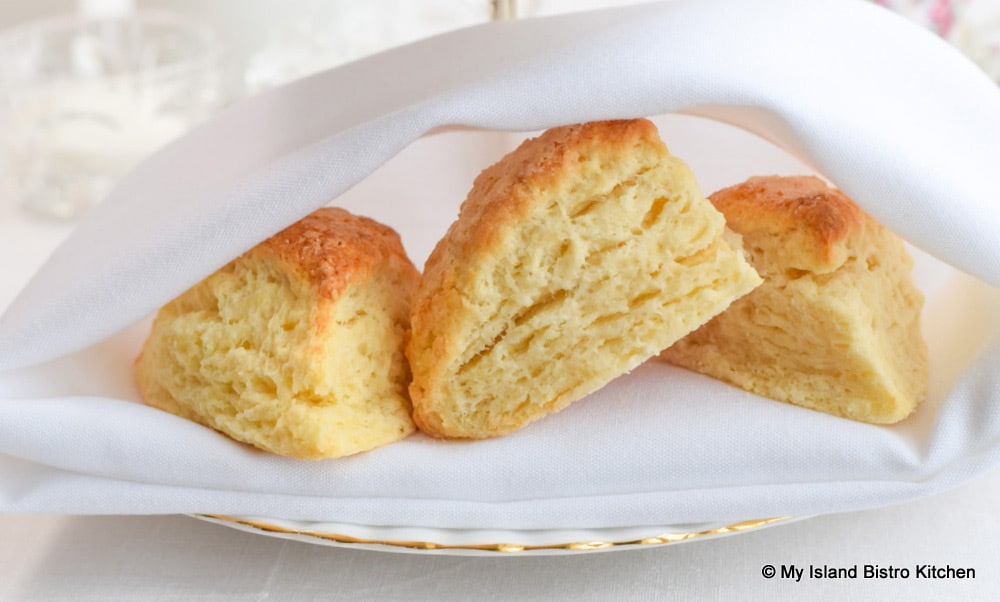
A dusting of icing sugar may be applied or occasionally a glaze. Sometimes, scones with currants, raisins, or fruit in them will be served. The scones may be round or triangular shaped and sometimes even square.

Jam for Scones
Traditionally, the jam served with scones is strawberry though it is now quite common to serve other flavors of jam with scones. For example, I have found my Strawberry Rhubarb Freezer Jam is lovely on scones as is my Gooseberry Jam.
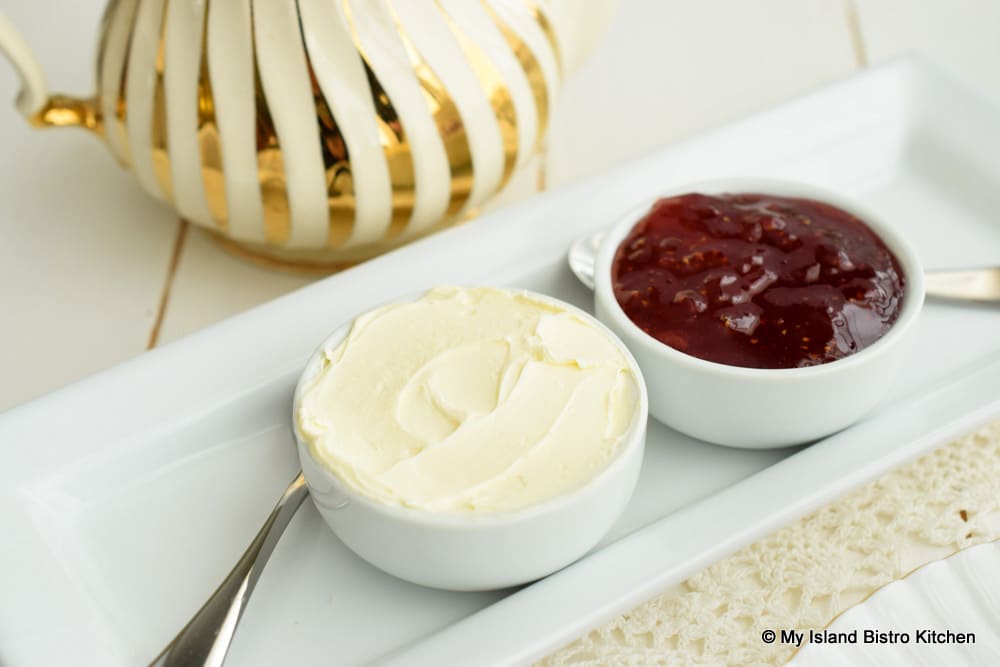
Clotted Cream and English Double Cream
Clotted cream is typically served with scones though its close cousin, English Double Cream, is often served, especially if clotted cream is not readily available as is the case here in PEI. One of our local supermarkets on the Island carries the British-imported English Double Cream (shown in photo below) and it is simply divine on scones. With its 48% M.F., it’s thick and rich and makes the Cream Tea experience all the more decadent!
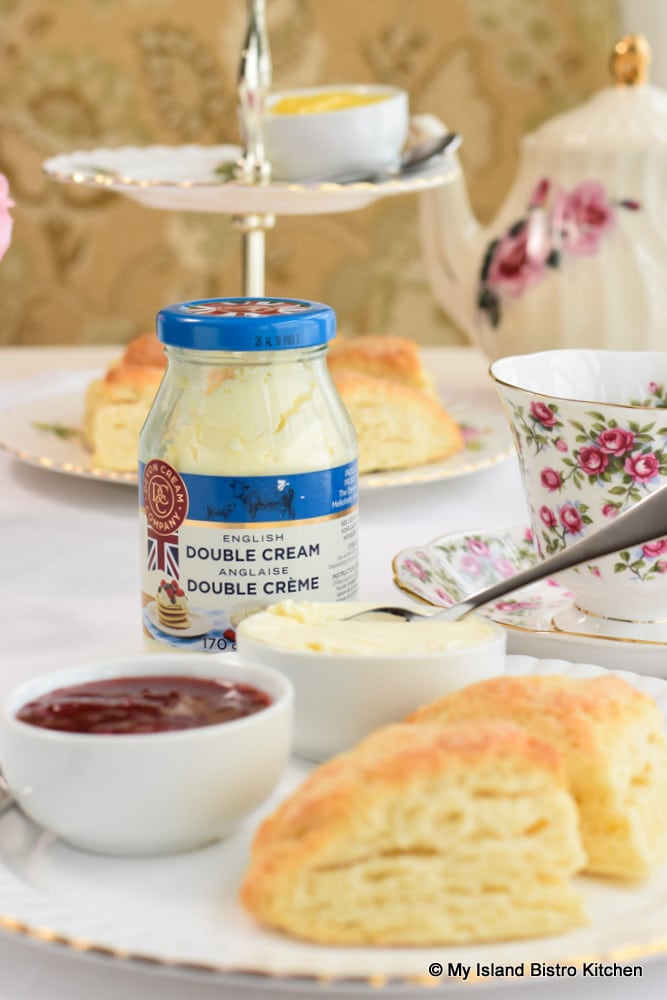
Lemon Curd
While lemon curd is not always served with scones, it is a favorite of mine and I do like to serve my own homemade lemon curd with scones. You can find my recipe for lemon curd here.
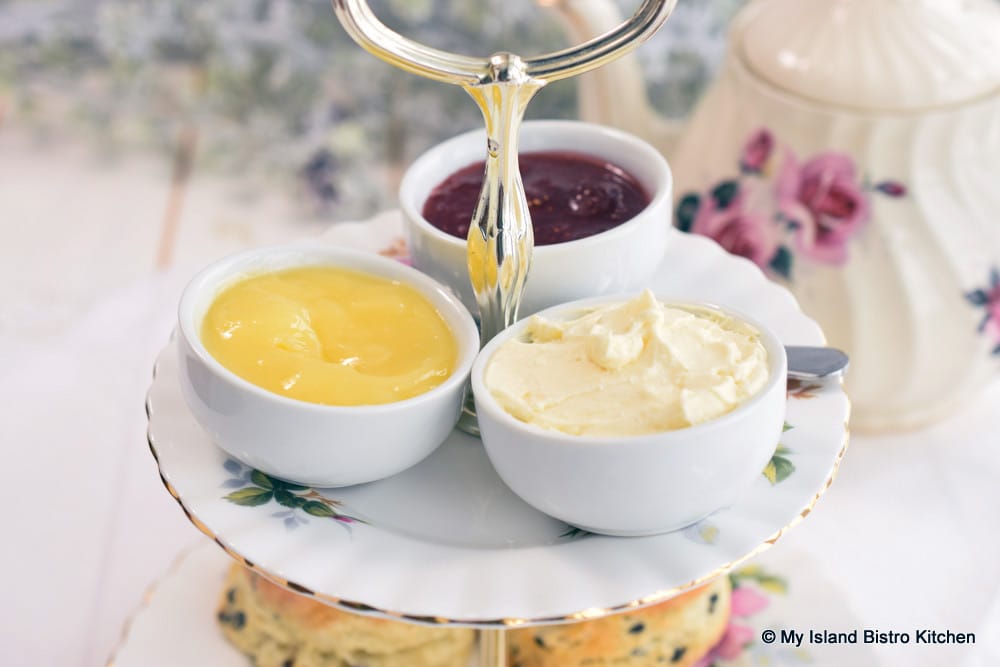
The Devonshire and Cornish Cream Tea Methods
There are two schools of thought about which should be applied to the scone first – the jam or the cream. The Devonshire practice is to place the cream first on the split scone then top it with a spoonful of jam while the Cornish way is to place the jam on the scone first then top it with a dollop of the cream.
The choice of how to layer the jam and cream on a scone is, in my opinion, a matter of personal preference. I have enjoyed many a scone, some of which have had the cream layered before the jam and others have had the jam spread on the scone then a spoonful of cream on top. Both ways have resulted in an equally enjoyable scone experience.
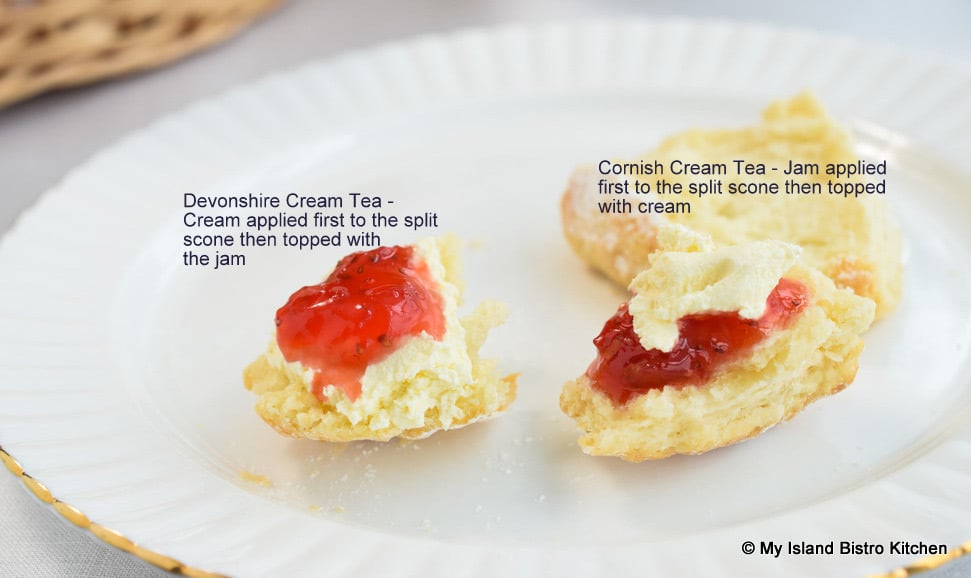
Etiquette for Eating Scones
The etiquette for eating a scone is to simply, with hands, break apart the scone, horizontally, into two pieces. This should easily occur if the scone is fresh. A knife should not be required to split a tender scone.
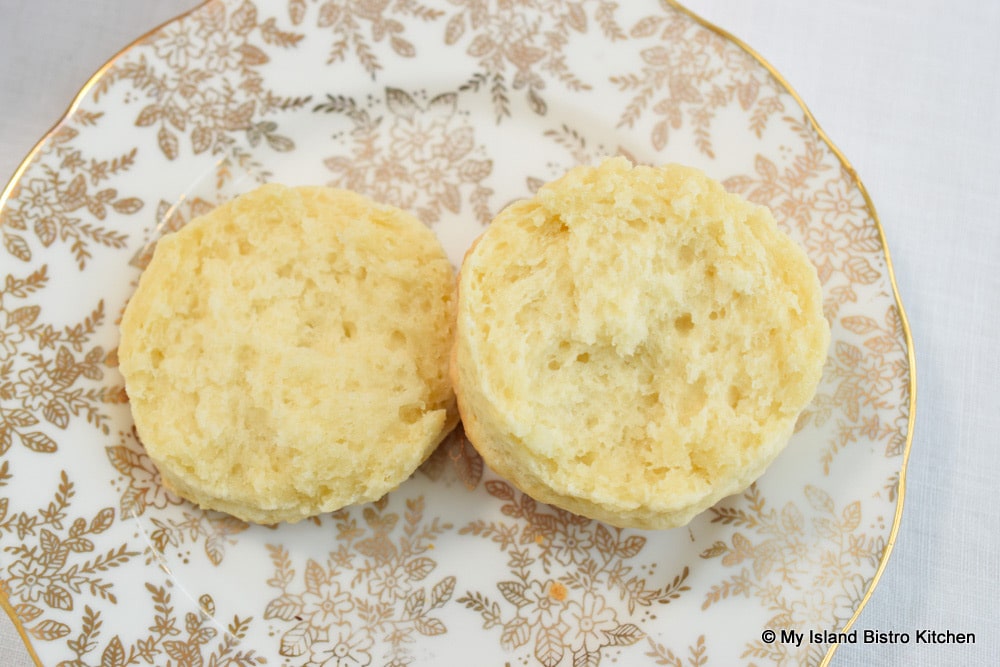
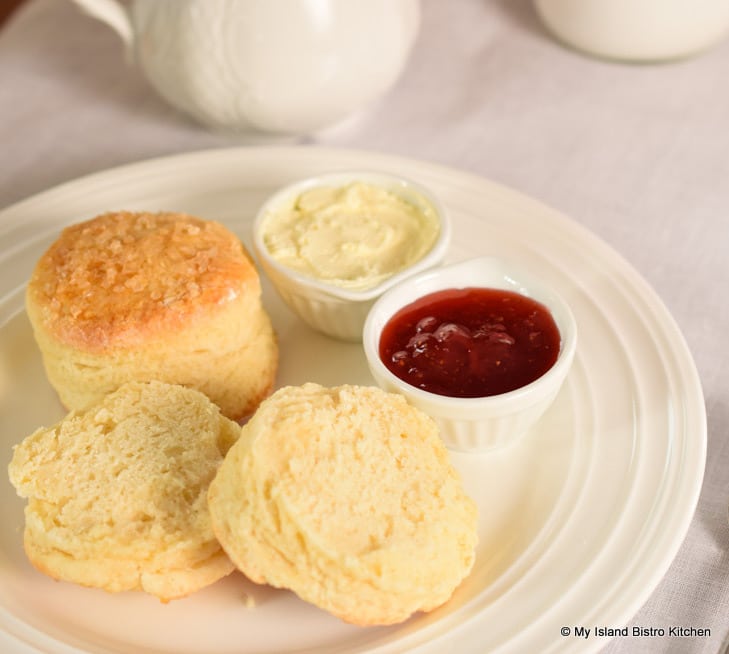
Unless the jam/lemon curd and clotted cream are served in individual dishes (as shown in the photo above) for each guest, scoop out the jam/lemon curd and cream from the communal dishes on the table (shown in the photo below). Scoop out amounts sufficient for one scone, even if there are two scones on the plate.

To ensure there is no chance of any jam/lemon curd or clotted cream finding their way into each other’s dishes, use individual spoons to separately scoop the jam/lemon curd and cream. Repeat when it’s time to consume a second scone.
In cases where you are provided with personal dishes of condiments/scone toppings (as seen in photo below), no individual spoons for each condiment are required and you can partake of the condiments as desired.
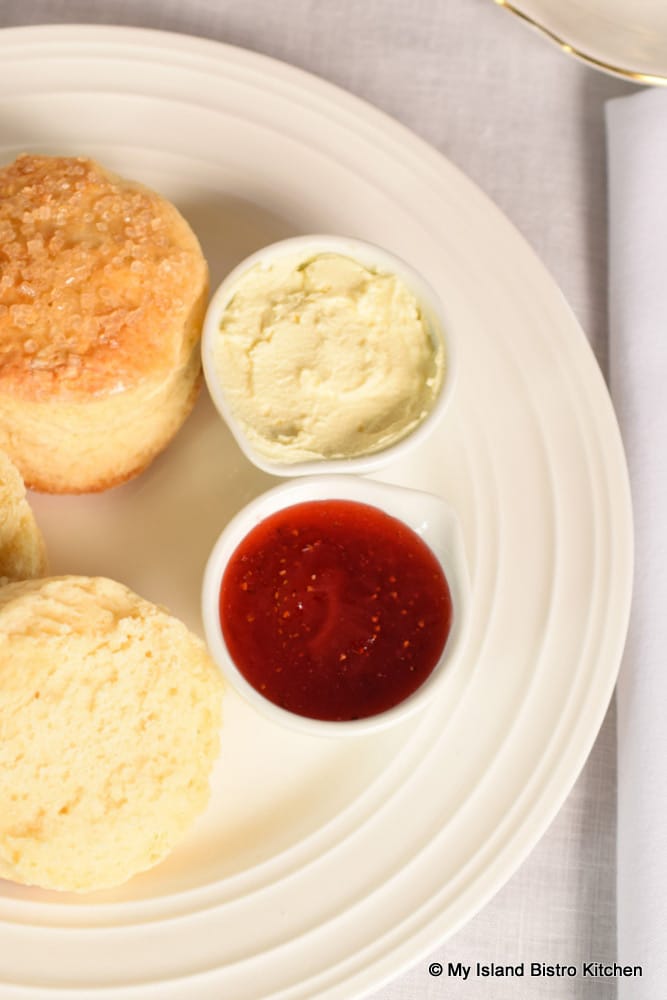
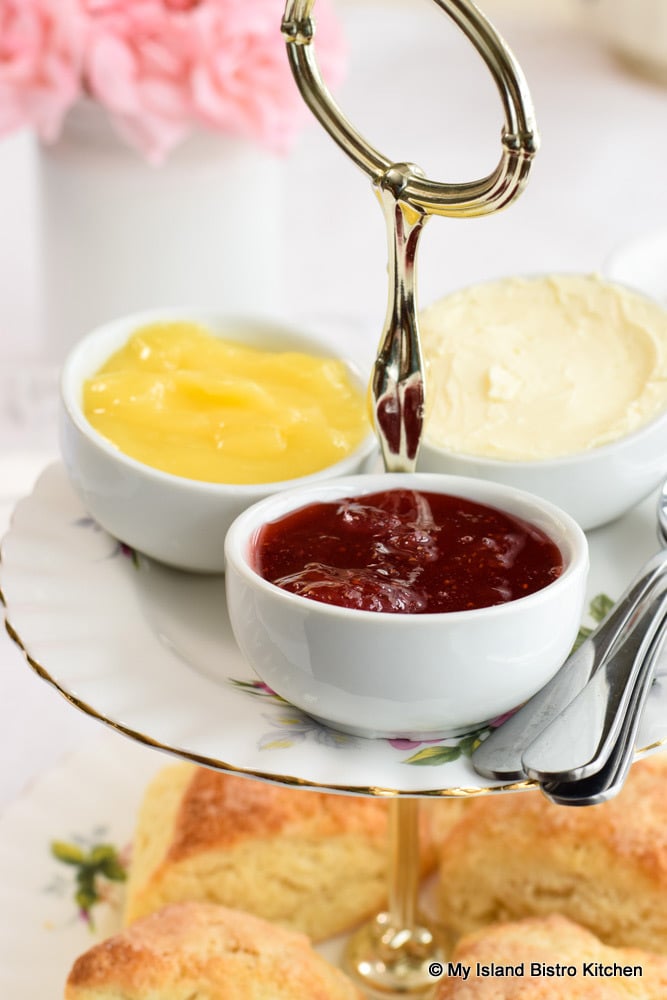
From communal dishes of condiments (pictured above), place the spoonfuls of condiments on to the side of your plate containing the scone (as shown in photo below). The condiments, or scone toppings, should not be applied from the communal dishes directly to your scone.
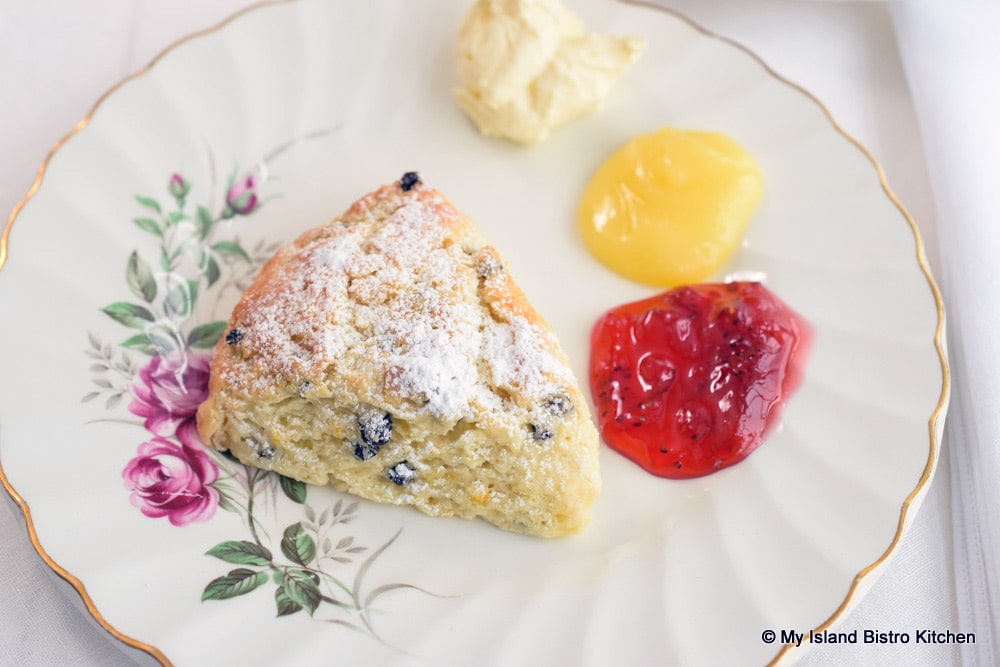
Rather than spread the cream and jam on an entire half of the scone (as shown in photo below), my preference is to further break apart the scone into smaller one- or two-bite pieces.

Then, using a knife, the jam/lemon curd and cream are layered onto a smaller broken off piece of scone (shown below) using either the Devonshire or Cornish method.

It is not considered appropriate to sandwich the two halves of a scone together after applying the jam/lemon curd and cream. Each piece of the scone should be eaten separately.
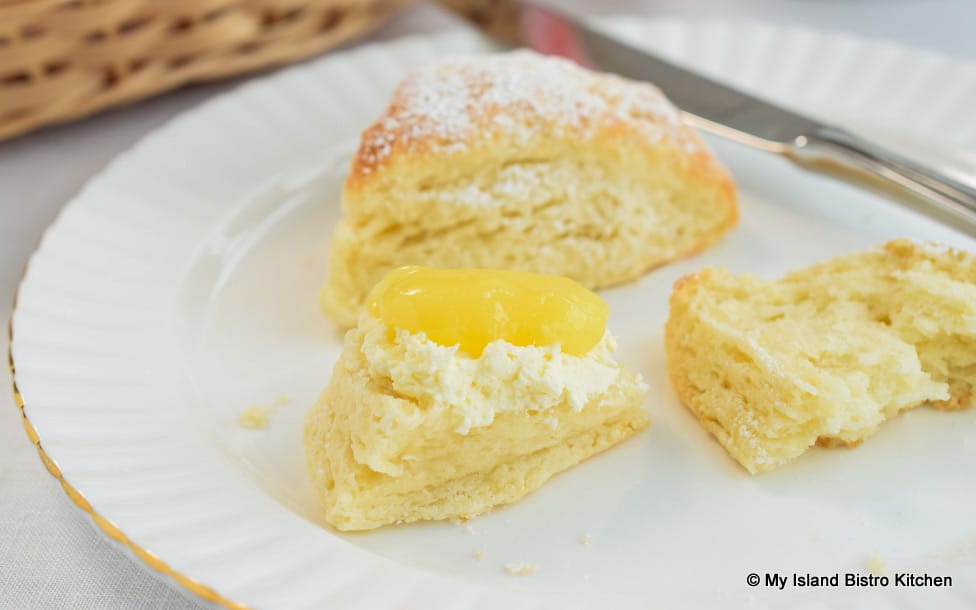
So, now it is time to enjoy the genteel experience of a Cream Tea with just a few reminders: 1) Pinkies tucked in (not out); 2) no wild circular stirring of the tea into a vortex (rather, stir it back and forth in a 6 to 12 motion with no clinking the sides of the cup in the process); and 3) no tapping of the teaspoon on the side edge of the cup after stirring.
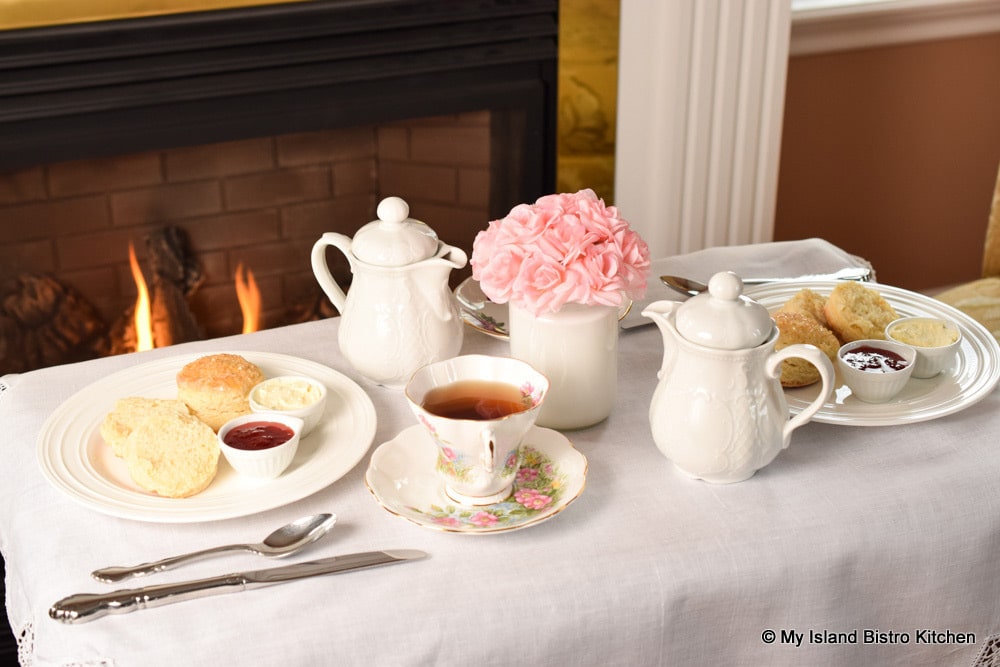
To view previous Blogiversary celebrations of My Island Bistro Kitchen, click on the links below:
1st Blogiversary
2nd Blogiversary
3rd Blogiversary
4th Blogiversary
5th Blogiversary
6th Blogiversary
7th Blogiversary
Connect with My Island Bistro Kitchen by:
Joining the Facebook page for My Island Bistro Kitchen: https://www.facebook.com/MyIslandBistroKitchen/
Following “the Bistro” on Twitter: https://twitter.com/PEIBistro/
Seeing the drool-worthy gallery of mouth-watering food photos from My Island Bistro Kitchen on Instagram: https://www.instagram.com/peibistro/
Following “the Bistro” on Pinterest at https://www.pinterest.ca/peibistro/


